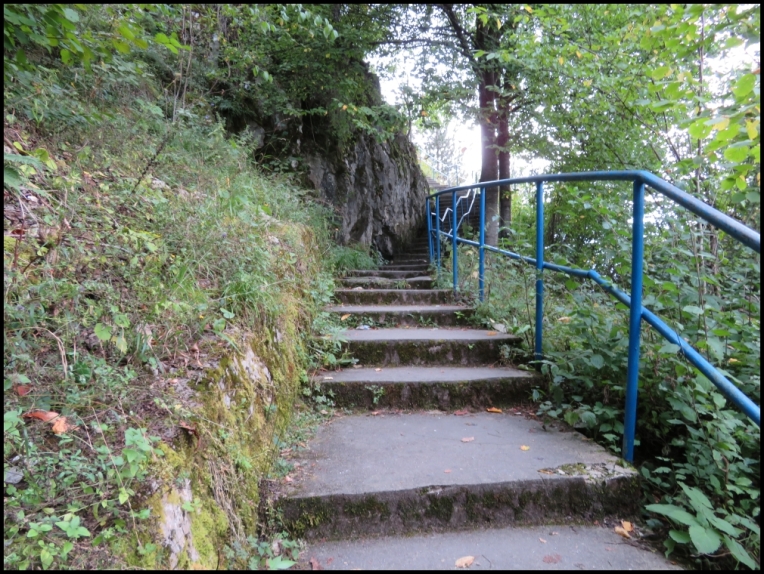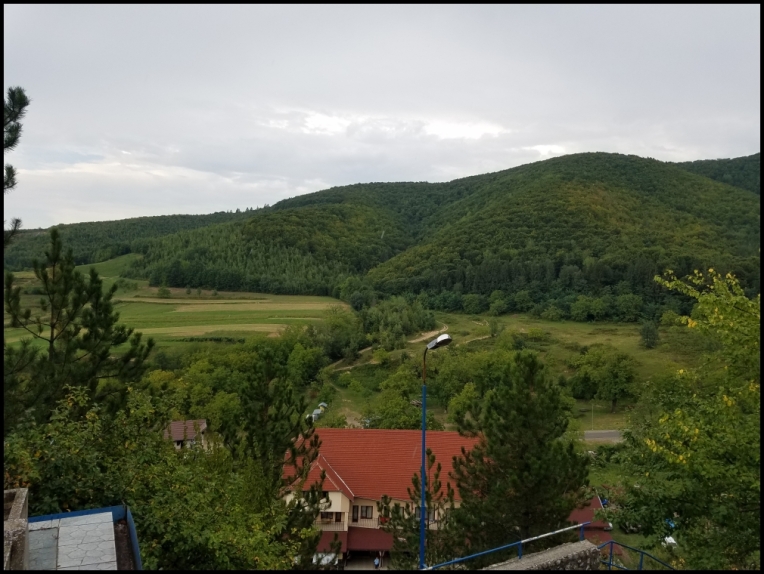It was a regular work day for Traian Curta, when, back in 1975 he was in charge with dynamiting a new area while working in a local mining exploitation company, when suddenly, a big grotto had opened beneath the ground. He didn’t want to get famous for being the first person to be lowered into that grotto, but he did it, and he was the first person who “visited” the cave up to the main gallery. After 5 years of explorations by amateur and professional speleologists, and building a basic infrastructure, the cave was opened for visitors in 1980.
Bears’ Cave is located in the Apuseni National Park, in the western side of the Apuseni Mountains, Transylvania, on the outskirts of Chiscau village, Bihor County, Romania.

Getting to Bear’s Cave can be done by car. I’m sure there might be a bus running in the nearby village, but that was not our option. We rented a car from Budapest, from Hertz (even though there are several other options, we always liked Hertz – discounts are available if you book in advance for Europe, or for CAA members). If some people might ignore reading the small letters from a contract sometimes, you must read all of them (including the exception list) if you are planning to visit Romania with a rented car. As you might know, Eastern Europe has certain restrictions when renting a car, and Romania is part of the East European country list, where one may not take the car. Luckily, we were able to rent the car from Budapest, and able to drive it to Romania.
We have left Budapest around 8 o’clock in the morning, as we intended to arrive by early afternoon and visit the cave before the closing time. 350 km, and about 5 hours driving are not much for us, but we wanted to be prepared for the rumours we have heard that crossing the Hungarian-Romanian border with a non-European passport might be a little time consuming. False rumours, or at least on that day. It was a little bit awkward when the officer asked us to pull on the side after taking our passports and the car papers, but after we saw another car in the same situation, I realized this might be the custom. My husband went by the officer booth and waited for the papers, which were checked by both Romanian and Hungarian officers in the same time. After not more than 10-15 minutes we got our papers back and continued our way. Not before we exchanged some local money and bought a sticker necessary to drive a car on Romanian roads. The Hertz agent was very nice explaining to us that all tolls are paid already for the Hungarian roads, but there is some fee (about 5 Canadian dollars for 1 week, or 10 CAD for 1 month) to be paid once we cross the border, which we did right there, at the first gas station, as we didn’t want to risk any kind of fine during our trip.
After a smooth drive straight to the Bear’s Cave, we left our car in an archaic kind of parking lot. After we paid a small parking fee (~ 2 CAD) to a person who came immediately to our car once we pulled over, I started wonder if this is a legal, or a safe parking. I’m still not very sure if this was legal, however, I think it is safer to leave the car and pay, rather than parking somewhere else on the edge of a road.
After we climbed several stairs, we found ourselves in front of the Bear’s Cave entrance, where we could admire the superb view of the nearby mountains.

At the end of August, everything looked amazing; the various shades of green and the fresh air enchanting all our senses.
When we got our tickets we were advised to wait few more minutes for the guide. We had an ice cream sandwich with a Polar bear on the pack, while taking few pictures around, from the terrace.

Unfortunately they do not have English speaking guides, and we had to pay an additional fee to be able to take photos inside of the cave. But it was well worth it, as the fees are pretty small ~ 6-7 Canadian dollars per person for the entrance, and 5 CAD for taking photos.
Another family arrived in few minutes, and the guide took us inside the cave. He opened the big metallic door, and turned on a light for us to see a concrete pathway leading us inside. As soon as we passed the door we looked at ourselves, as we felt a cold breeze coming from inside. We looked worriedly at our guide, as he had a thick sweater, and wondered if we will be cold with our light tops. My optimistic husband said we will be fine, and we headed down, following the little group.

Out of 1500 m of total length of the cave on 2 levels, only approximately 800 m are opened for visitors, the remaining of 700 m is only opened for professional speleologists (and probably only with special approvals).
Only 3 galleries are opened for visitors, out of 4 main galleries: Bones Gallery, Emil Racovita Gallery, and Candles Gallery. The 4th one, Scientific Gallery, accessible only through a 30 m pit is opened only for professional speleologists.
The name of the cave was given due to the high number of bear bones found in the cave: about 140 bear skeletons of a type of bear which became extinct during the Last Glacial Maximum, more than 24,000 years ago: Ursus Spealeus. Looks like the original entrance did collapse, trapping the bears inside while hibernating, where they found their end, since no other exit from the grotto existed. We could also see the hole in the ceiling, the one that Traian Curta dared entering the unknown cavity. This kind of discovery reminded me the cave we visited not very long ago in Cuba.
As we progressed, we found ourselves very shortly in the Bone Gallery, easily to be recognized by the stack of bear bones right beside our path.

We rushed to catch the group, as the guide was calling, looking after us. Approaching the group, I noticed that he turned off the lights behind us. I was impressed, since this way, the temperature will be held as low as possible, preserving the underground structure. Well, as much as possible, since I saw quite few times how green moss sprouted leisurely beside the lights.
The main gallery is named after one of the most famous Romanians, the first biologist in the world to study the arctic life: Emil Racovita. The whole gallery is impressive with the surrounding structures, all kind of stalactites, stalagmites, columns, draperies, and other sort of intricate structures, forming various figurines or beautiful ponds.
There are a few funny structures that can make you think of ghosts, aliens, earthly, or non-earthly figures. Some of them have been given names: the Enchanted Castle, the Dwarf’s House, the Water Lilly Lake, the Old Men’s Council, to name a few. I couldn’t really identify them (other than the Water Lilly Lake), but instead I have given them myself, a few namesJ
The Candle Gallery is also easily recognized, as several stalagmites stand out graciously at some point.

Shortly after, we found ourselves at the end of the trail, where an entire bear skeleton lays down, surrounded by a metal rail. Here is the most important exhibit, where the name of the cave itself came from.


We had to take the same path to get back and exit the cave. After all, it was not cold at all; no wonder why the moss is flourishing everywhere, especially on the bear bones.

We were the last group of the day, and I feel that the guide was hurriedly moving us around. A great experience, Bear’s Cave is such a hidden gem between these mountains. Pleasantly surprised, the whole area is spectacular, nice to be explored more, which we did a little bit next day, when we decided we have time to see another cave, Scarisoara Ice Cave, where the largest underground glacier from Romania is.
**visited in August 2018








Amazing!
LikeLiked by 1 person
Thank you🙂
LikeLiked by 1 person
Good info, I’ll be heading here in 2 days!
LikeLiked by 1 person
Hope you had fun and found the info useful. Happy travels!!
LikeLike